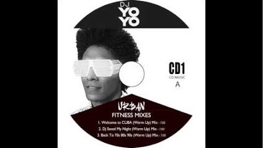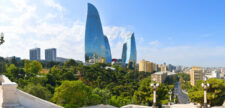Globalization Through The Lens of Malaysia
Malaysia perfectly exemplifies today’s globalization.
Kuala Lumpur’s Twin Towers seen from the Traders Hotel where I stayed.

Here I outline the way globalization is woven into Malaysia and the way Malaysia weaves itself into globalization. Some of my observations are not surprising. They are rather eyewitness confirmation of what we hear/read about every day.
Young women in Malaysia, as elsewhere in world, wear stylish fingernail polishes in black and gray and aubergine. One nail might be sparkly. They wear Converse tennis shoes, often in black or pink.
Young men shave the sides of their heads and sweep the top into a spike. I see a version of this hairstyle everywhere in the world.
These businesses are givens in Malaysia and everywhere else: McDonald’s, KFC, Burger King, Starbucks, Pizza Hut, Domino’s, Subway.
Other globalized businesses are too many to mention. In the food sector alone, Tesco (British) is found in Malaysia, as well as the department store chain Aeon (Japan).
 The Oscar is a 3.85 kg gold-plated tin statuette. The statuette is crafted in the U.S. The tin comes from Malaysia. Around 100 million people watched the 2016 Academy Awards worldwide.
The Oscar is a 3.85 kg gold-plated tin statuette. The statuette is crafted in the U.S. The tin comes from Malaysia. Around 100 million people watched the 2016 Academy Awards worldwide.
Cuban-born DJ Yoyo Sanchez held a Cinco de Mayo event this year “to celebrate Mexican culture” at the Traders Hotel  in downtown Kuala Lumpur.
in downtown Kuala Lumpur.
Addiction to video games is worldwide. This is hardly a new observation, but it is continually striking to me. Also, in any given place I am, all I have to do is scan the crowd – indoors or out, loners or in groups – and more than half the people are on their phones or tablets. When I see a parent trying to get their kid off a video game, I see a losing battle because the parent would have to put away their gadget first.
Elsa and Anna and, oh yes, Olaf. Why did I not see this coming? But I didn’t until I went to the tourist town of Melaka and saw the pedicabs decked out. There is also a Minions pedicab, in case you needed to know.
I was first introduced to the idea of the shopping center as a tourist attraction when I visited Abu Dhabi in 2012, when at one point my guide took me to one. At first I wondered why, but then it occurred to me that it counted as a stop on my tour. I was told to have a coffee at Gloria Jean’s, which I did.
The coffee shop at the Kuala Lumpur National Museum is Gloria Jean’s. I know stuff like this now.
I don’t know whether the Suria KLCC shopping center at the base of Kuala Lumpur’s twin towers, pictured above, counts as a tourist attraction or not. It may well be. It has every single fancy brand you can imagine and is jam-packed.
I had dinner one evening there at Chinoz on the Park and had the ‘Superfood’ Rainbow Salad with quinoa, avocado, cabbage, carrots, beetroot, pomegranate, and tempeh chips. It was good. I’ve had a similar salad in Durham, North Carolina.
The Message T is alive and well, with random sayings printed across people’s chests in English and sometimes French. The question is: Why is it still a thing?
Malaysian-born Jimmy Choo gave us the footwear for Sex and the City. More recently he’s signed a line of shoes based on the materials and techniques from tsunami-hit Fukushima, Japan.
from tsunami-hit Fukushima, Japan.
Cranes. I think of the line from the 1960’s The Graduate when the Dustin Hoffman character is given the magic career word, “Plastics.” If I could transport myself back in time 10 -15 years and anticipate the current worldwide building boom, I would say to some eager young graduate, “Cranes.”
Everywhere I go there are cranes, beginning with Duke University and Durham NC, which have been crane-scrapes for the past several years. Next stop on my around the world tour, San Francisco, is just as crane heavy, as is Japan and, yes, Kuala Lumpur.
Case in point, before leaving Kuala Lumpur I went back to the Suria shopping center for lunch, chose a Thai place, and had the following view:
Lovely! I should come back to KL in about 10 years and see it built, rather than in construction.
Builders probably take big chances. Not so sure crane suppliers do – only that they might not get paid when the current boom busts.
Globalization is here to stay. Malaysia is deep in the mix.
See also: All My Asia Blogs
Categorised in: Adventure, East Asia, Thoughts
This post was written by Julie Tetel Andresen
You may also like these stories:
- google+
- comment




